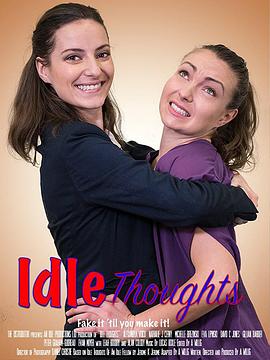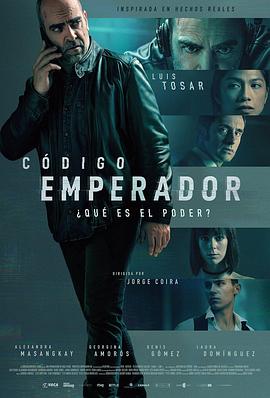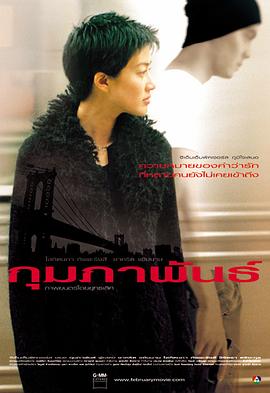Ming
搜索"Ming",找到91部影视作品
导演:
/黄明川
主演:
剧情:
一位無法解決自己歸屬的漢化泰雅人阿明,回到幼年故鄉,企圖自殺未亡,救了阿明一命的泰雅老人,將阿明安置在河邊雞寮裡,老人的兒子阿將朝思夢想去台北闖天下,老人則堅持留在村中,兩人之間默默地存在著衝突。 染滿都市氣息的雛妓秀美,騙了財主的巨款逃回村子裡想嫁人,而她尋找的終身伴侶,即是幼時親密男友阿將,加速他離鄉的掙扎。 被秀美騙錢的台北財主,遣派兩名道上兄弟追到村子裡來找人,秀美被追得無處可躲,竟然藏到阿明的雞寮來過了一夜。阿將嫉妒秀美與阿明的關係,把阿明趕到沒人住的廢山洞去。阿明在洞中觀察蝙蝠螫居穴中,頓悟生命道理,並從泰雅老人口中得知生父秘密。
导演:
/古斯塔夫·德池
主演:
剧情:
影片《13 个雪莉:现实的幻象》用美国画家爱德华•霍普的 13 幅绝世名画构成了美国社会历史的现实风景,而历史正是由无数的个人故事所书写的——雪莉,一个美国女性的缩影,她走进霍普的画作,走过美国 20 世纪的重大历史时刻,见证政治、社会和文化等各层面的剧变:从珍珠港事变到第二次世界大战、从麦卡锡时代和冷战到肯尼迪总统遇刺身亡和越战爆发、从股市崩盘到经济萧条、从猫王埃尔维斯•普利斯莱和摇滚乐到马龙•白兰度和玛丽莲•梦露…… 爱德华•霍普的绘画作品受“黑色电影”流派影响,相应的也影响了希区柯克、贾木许、文德斯等电影导演的创作。本片导演古斯塔夫•德池敏锐地捕捉到霍普的绘画与电影艺术之间的关联,精选霍普的 13 幅生活风景画作,以绘画与电影的对话为主轴,加以现实的叙述,用绘画、现实和影像组合出新的电影语言,利用灯光、颜色和音乐建构出剧场化的体验。宏大的议题倚托几近静止的精美画面,借用雪莉段落式的内心独白,以女性视角解读美国历史,书写出一篇新世纪美国女性的独立宣言,是美国文化前进的齿轮印记。
导演:
/李·以萨克·郑
剧情:
故事发生在20世纪80年代的美国,美籍韩裔男子雅各布(史蒂文·元 Steven Yeun 饰)带着妻子莫妮卡(韩艺璃 饰)和两个孩子大卫(Alan S. Kim 饰)、安妮(Noel Cho 饰)一起从熟悉的西海岸搬到了偏僻而又陌生的阿肯色州。虽然对于丈夫的这一决定,莫妮卡的心中十分的反对,但她拗不过雅各布的坚决和顽固,只得被迫夫唱妇随。 蛮荒之地的生活既不舒适也不有趣,在最初的新鲜感过去之后,大卫和安妮很快就开始怀念起过去的生活了。之后,孩子们的外婆也来到了他们的身边,给这个家庭带来了一丝热闹的气息。雅各布没有发现的是,当他将越来越多的时间和精力投入到开发农场这件事情上时,他和妻子之间的距离就越来越远。
导演:
/由拉特·史帕克
剧情:
娇坦(索尔德娜帕·塔特朗西 Sopitnapa Dabbaransi 饰)热爱绘画,却一直无法出人头地,被诊断患上绝症之后,娇坦决定前往纽约,换一换心情。在纽约,娇坦不幸的遭遇了车祸,就此结识了善良的泰国青年基(威吉拉·达利亚昆 Vichitra Triyakul 饰),车祸令娇坦失去了所有的记忆,她唯一记得的,只有绘画,自觉着理应为此负责的基决定帮助娇坦找回她的记忆。 随着时间的推移,娇坦和基之间渐渐产生了真挚的感情,然而,基厌早已经倦了在纽约颠沛流离的生活,一心想要回到泰国,并为此加入了黑帮,替其卖命。一次偶然中,基误杀了黑帮老大的侄子,因此而陷入了巨大的危机之中。
导演:
/埃里克·冯·施特罗海姆
主演:
剧情:
Two differences between this Austrian version and the generally available American version are immediately obvious: they differ both in their length and in the language of the intertitles. The American version is only 1,883 metres long - at 18 frames per second a difference of some 7 minutes to the Austrian version with 2,045 metres. Whereas we originally presumed only a negligible difference, resulting from the varying length of the intertitles, a direct comparison has nevertheless shown that the Austrian version differs from the American version both in the montage and in the duration of individual scenes. Yet how could it happen that the later regional distribution of a canonical US silent film was longer than the "original version"? The prevalent American version of Blind Husbands does not correspond to the version shown at the premiere of 1919. This little-known fact was already published by Richard Koszarski in 1983. The film was re-released by Universal Pictures in 1924, in a version that was 1,365 feet (416 metres) shorter. At 18 frames per second, this amounts to a time difference of 20 minutes! "Titles were altered, snippets of action removed and at least one major scene taken out entirely, where von Steuben and Margaret visit a small local chapel." (Koszarski) From the present state of research we can assume that all the known American copies of the film derive from this shortened re-release version, a copy of which Universal donated to the Museum of Modern Art in 1941. According to Koszarski the original negative of the film was destroyed sometime between 1956 and 1961 and has therefore been irretrievably lost. This information casts an interesting light on the Austrian version, which can be dated to the period between the summer of 1921 and the winter of 1922. Furthermore, the copy is some 200 metres longer than the US version of 1924. If one follows the details given by Richard Koszarski and Arthur Lennig, this means that, as far as both its date and its length are concerned, the Austrian version lies almost exactly in the middle between the (lost) version shown at the premiere and the re-released one.A large part of the additional length of the film can be traced to cuts that were made to the 1924 version in almost every shot. Koszarski describes how the beginning and the end of scenes were trimmed, in order to "speed up" the film. However, more exciting was the discovery that the Austrian version contains shots that are missing in the American one - shots/countershots, intertitles - and furthermore shows differences in its montage (i.e. the placing of the individual shots within a sequence). All this indicates that Die Rache der Berge constitutes the oldest and most completely preserved material of the film.































